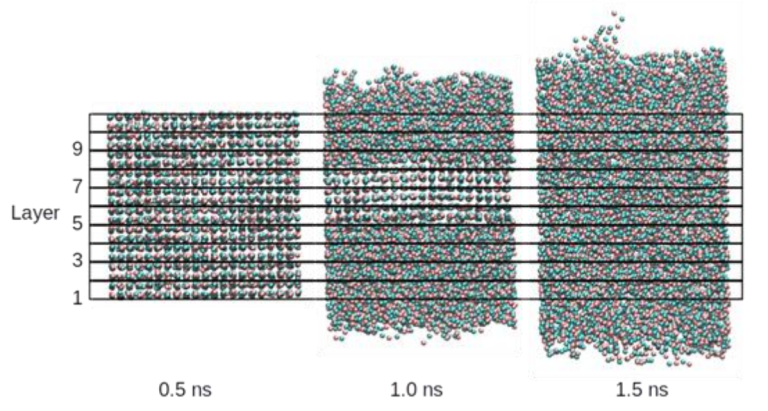Written by: Kelsey Swenson, IIDS Scientific Writing Intern
Molten salt reactors are advanced nuclear technologies capable of generating efficient electrical energy. Scientists such as John Russell, Associate Director for University of Idaho’s Center for Advanced Energy Studies (CAES), use the Falcon supercomputer to work on the fundamental physics behind these new molten salt technologies to eventually make reactors cheaper to build and operate, more reliable, and inherently safe by design.
The Idaho National Laboratory (INL) is the proponent for nuclear energy in the United States. Russell is working on research problems that apply to nuclear energy projects of interest to INL. His research uses simulation and modeling to predict how atoms will move over time.

Russell is a senior personnel for the CAES Research Experiences for Undergraduates (REU), operated by Boise State University and sponsored by the National Science Foundation. Each summer of the three year REU program, Russell hosts a summer student to work for 10 weeks on Russell’s project. This past year, Russell began modeling the mechanisms of melting in salts.
As Russell says, “molten salts have many uses, including pyroprocessing [recycling nuclear waste into fuel] or as a fuel salt in molten salt reactors.”
Predicting how these salts melt is incredibly computationally demanding. Each step of the simulation that Russell studies is one femtosecond – a short enough time to capture the motion of ions as they vibrate, stretch and come back together. Studying such short timesteps adds up: If a typical system has 8,000 ions, Falcon must complete about 80 billion atomic calculations of position, velocities and forces.
“There’s no way that a single person could ever do the kind of bookkeeping required to keep up with all these ions interacting with each other,” says Russell. Because of Falcon’s supercomputing power with 33,000 cores and outstanding support from IIDS and U of I Research Computing team, it makes his work far easier than the previous supercomputers he’s worked with. “I get a lot more hours on Falcon,” he says.
When dealing with billions of calculations to capture the fundamental physics of melting, every bit of improvement in speed and efficiency in doing the calculations is crucial.
“Falcon can do accurate, fast calculations, and it has huge capacity that allows for long simulation times for hundreds of individual trajectories,” says Russell. “This is a game changing tool for computational researchers and a tremendous asset for University of Idaho.”

John Russell, Ph.D.
Associate Director, Center for Advanced Energy Studies (CAES)
University of Idaho
Email: jtrussell@uidaho.edu

